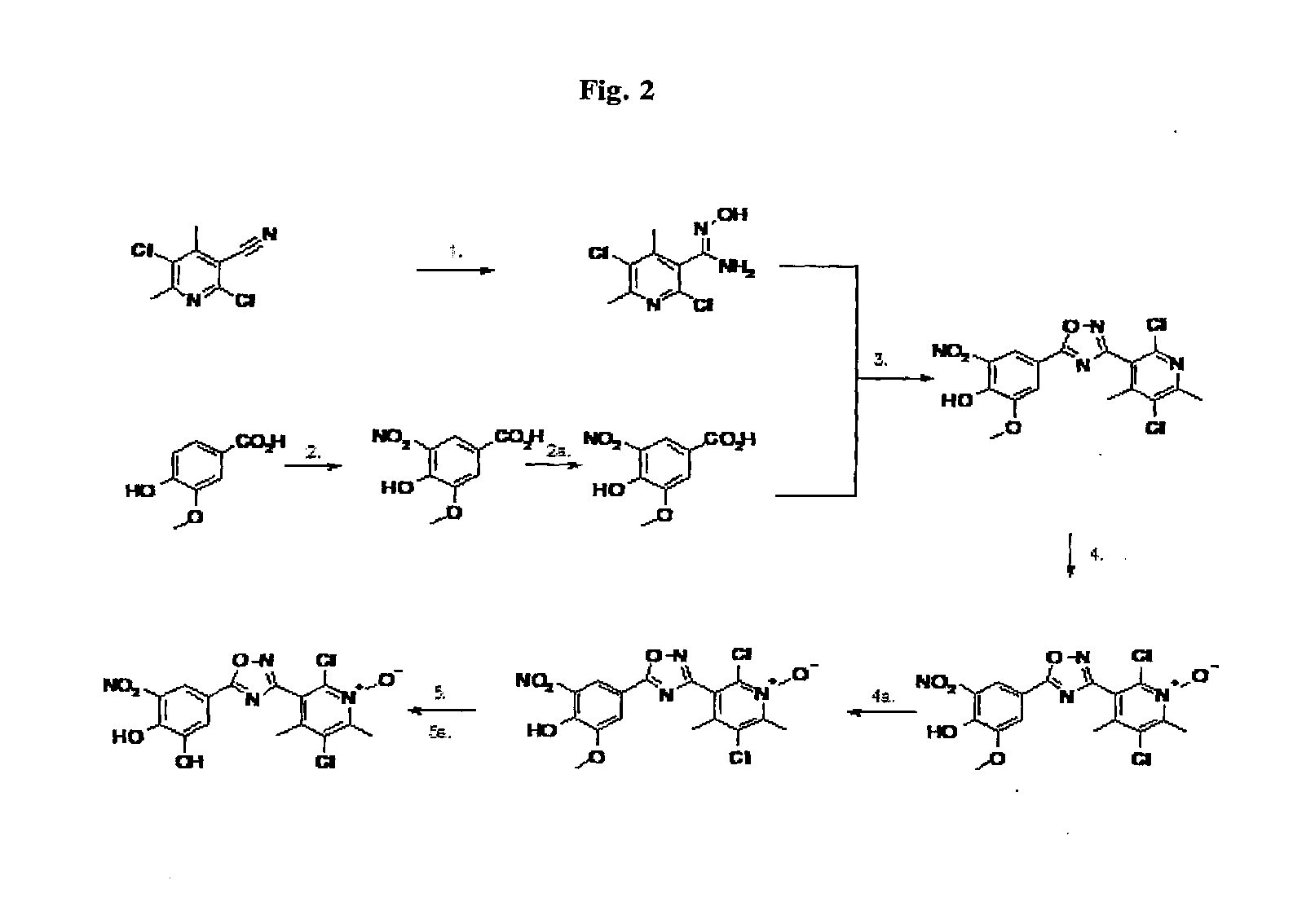Chemical compound useful as intermediate for preparing a catechol-o-methyltransferase inhibitor
a technology of catechol-o-methyltransferase and chemical compound, which is applied in the field of new compounds, can solve the problems of residual problems of comt inhibitors and not all patients get the most benefit from their levodopa/aadci/comt inhibitor therapy
- Summary
- Abstract
- Description
- Claims
- Application Information
AI Technical Summary
Benefits of technology
Problems solved by technology
Method used
Image
Examples
preparation 1
[0061]
[0062]Cyanoacetamide (280 g) was reacted with acetyl acetone (352.9 g) in methanol (1015 g) and morpholine (14.9 g). The reaction was stirred under reflux at 65° C. until the reaction appeared complete. The resulting product suspension was filtered, washed with methanol and dried to provide the desired product about 97% yield.
preparation 2
[0063]
[0064]The product of Preparation 1 (159 g) was suspended in acetonitrile (749.5 g) and cooled to 0-5° C. Sulfuryl chloride (178.9 g) was added and the reaction mixture warmed to room temperature and stirred until the reaction appeared complete.
[0065]The resulting suspension is cooled to 0-5° C. and filtered. The solid was washed with acetonitrile, ethyl acetate and heptane. The product was then dried under vacuum at 50° C. to yield the desired product (82%).
preparation 3
[0066]
[0067]Phosphoryl chloride (973.2 g), tetramethylammonium chloride (67.3 g) and compound of Preparation 2 (227.1 g) were added to dichloromethane (500 g). The suspension was heated to 85° C. and stirred for 5 hours. Excess of phosphoryl chloride was removed by distillation in vacuo. The reaction mixture was cooled below 30° C. and diluted with dichloromethane. The resulting solution was added to water (1350 g) at room temperature and stirred for 30 minutes. The lower organic phase was separate and the aqueous phase extracted with dichloromethane. The organic phases were combined, washed with water and then treated with charcoal. The charcoal was filtered and a solvent swap to heptane was performed by distillation at atmospheric pressure. The solution was filtered at 50° C. and then cooled to 30° C. On further cooling to 0° C. crystals were obtained. These were isolated by filtration, washed twice with heptane. After drying at 50° C. the desired product was obtained typically at...
PUM
 Login to View More
Login to View More Abstract
Description
Claims
Application Information
 Login to View More
Login to View More - R&D
- Intellectual Property
- Life Sciences
- Materials
- Tech Scout
- Unparalleled Data Quality
- Higher Quality Content
- 60% Fewer Hallucinations
Browse by: Latest US Patents, China's latest patents, Technical Efficacy Thesaurus, Application Domain, Technology Topic, Popular Technical Reports.
© 2025 PatSnap. All rights reserved.Legal|Privacy policy|Modern Slavery Act Transparency Statement|Sitemap|About US| Contact US: help@patsnap.com



